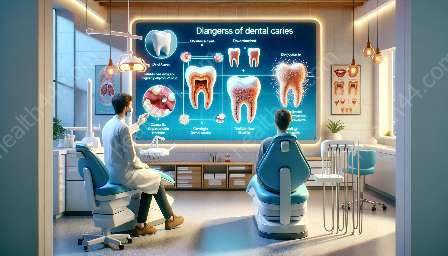Oral cancer is a serious health condition that affects millions of people worldwide. It is commonly associated with lifestyle factors, particularly smoking. This article explores the intricate connection between oral cancer and smoking, shedding light on the harmful effects of tobacco use and the importance of good oral health in preventing this devastating disease.
The Link between Smoking and Oral Cancer
Oral cancer, which includes cancers of the lips, tongue, cheeks, floor of the mouth, hard and soft palate, sinuses, and throat, is strongly linked to tobacco use, including smoking and smokeless tobacco products. Research has shown that smokers are at a significantly higher risk of developing oral cancer compared to non-smokers. This correlation can be attributed to the harmful chemicals and carcinogens present in tobacco products, which can damage the cells in the mouth and throat, leading to the development of cancerous growths.
When tobacco smoke is inhaled, it comes into direct contact with the oral cavity, exposing the delicate tissues to a toxic mix of chemicals. Over time, this exposure can trigger changes in the cells, increasing the likelihood of cancerous transformations. Additionally, smokeless tobacco products, such as chewing tobacco and snuff, also pose a major risk for oral cancer. These products contain carcinogens that can cause cellular damage and contribute to the development of oral cancers.
Furthermore, smoking has been identified as a major risk factor for several other types of cancer, including lung, throat, and esophageal cancer. The detrimental effects of smoking extend beyond the oral cavity, highlighting the widespread health risks associated with tobacco use.
Impact of Poor Oral Health on Oral Cancer
It is well established that maintaining good oral health is essential for overall well-being. Poor oral hygiene, untreated dental issues, and the presence of oral infections can significantly impact one's susceptibility to oral cancer. Inadequate oral hygiene practices, such as infrequent brushing and flossing, can lead to the buildup of plaque and bacteria in the mouth, creating an environment that is conducive to the development of oral diseases, including cancer.
Individuals with untreated dental problems, such as gum disease, tooth decay, and oral infections, may experience chronic inflammation and damage to the oral tissues. Persistent inflammation has been linked to an increased risk of cancer, as it can contribute to cellular abnormalities and compromise the body's natural defense mechanisms against the growth of cancerous cells. Additionally, certain oral infections, such as human papillomavirus (HPV) infection, have been identified as a risk factor for oral cancer, underscoring the importance of maintaining optimal oral health to reduce the likelihood of developing this disease.
Regular dental check-ups, proper oral hygiene practices, and timely treatment of oral issues are crucial in reducing the risk of oral cancer. By prioritizing good oral health, individuals can empower themselves to minimize the impact of poor oral health on their overall well-being, including the risk of developing oral cancer.
Taking Steps towards Prevention
Understanding the connection between oral cancer and smoking underscores the importance of adopting preventive measures to safeguard oral health. Here are several actions that individuals can take to reduce their risk of oral cancer:
- Quit Smoking: The most effective way to lower the risk of oral cancer linked to smoking is to quit tobacco use altogether. Smoking cessation not only reduces the risk of oral cancer but also offers numerous other health benefits, contributing to a healthier lifestyle.
- Adopt a Healthy Diet: Consuming a balanced diet rich in fruits and vegetables can provide essential nutrients and antioxidants that support overall health. Certain dietary components have been associated with a reduced risk of oral cancer, making wholesome nutrition a key aspect of prevention.
- Maintain Good Oral Hygiene: Regular brushing, flossing, and oral exams are fundamental in preventing oral diseases, including cancer. Practicing good oral hygiene habits helps maintain a clean and healthy oral environment, minimizing the risk of cancerous changes.
- Limit Alcohol Consumption: Excessive alcohol consumption has been linked to an increased risk of oral cancer. Moderating alcohol intake or abstaining from alcohol can contribute to a lower risk of developing this disease.
By taking proactive steps to minimize exposure to risk factors and prioritize oral health, individuals can play an active role in reducing their susceptibility to oral cancer. Additionally, raising awareness about the connection between oral cancer and smoking can empower communities to make informed choices and advocate for tobacco control measures that promote public health.
Conclusion
The relationship between oral cancer and smoking is multifaceted, with tobacco use significantly increasing the risk of developing this devastating disease. At the same time, the impact of poor oral health on oral cancer highlights the critical role of maintaining optimal oral hygiene and seeking timely dental care. By understanding the intricate connections between lifestyle choices, oral health, and disease risk, individuals can make informed decisions that support their overall well-being. Empowering individuals with knowledge about the risks and preventive strategies associated with oral cancer is essential for promoting a healthier, cancer-free future.



